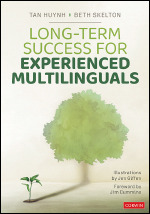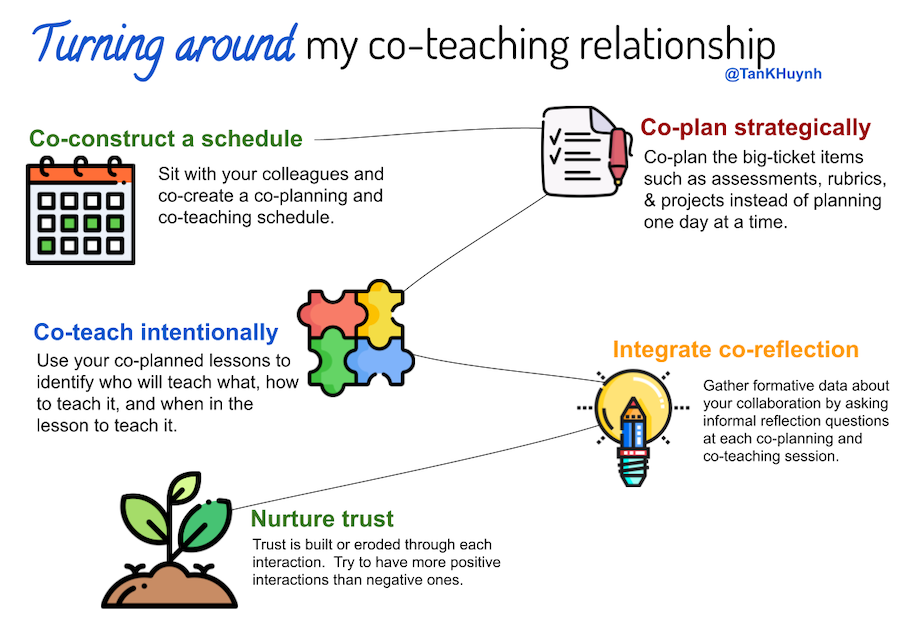Set Up New Co-teaching Relationships that Snap!
A MiddleWeb Blog

I was so excited to return to the English language specialist position after having taught as a social studies teacher for the prior 2 years.
My job was to teach English – co-planning and co-teaching with 13 other teachers. I had not worked with any of my 13 colleagues before, so working on establishing schedules and building relationships were my top two goals.

The demands of a teaching schedule and workload often leave little wiggle room for items not already on the docket, meaning co-planning would come last.
As I worked to discover co-planning times, I discovered a helpful fact. I noticed that my colleagues all had regular grade-level meetings. For example, grade 9 science was split between 2 teachers. I went to their schedule and found that they had grade-level planning time on a particular date. Luckily, that time was also available for me too.
My colleagues were happy with this approach because it didn’t make more work for them. They didn’t need to devote another prep time to co-planning with me separately.
Continuing with my example, as the grade 9 science teachers planned the unit, I was there also to find ways to scaffold what they wanted to do. During our first co-planning meeting, I focused on co-designing summative assessments as this would maximize our time together and provide long-term support for many students, not just the ones identified as multilingual learners (MLs).
Co-planning is co-teaching
I was also intentionally more contributory during co-planning meetings than during co-teaching sessions as I am often unfamiliar with high-level content taught in grade 9 science. When I contributed, I would usually ask teachers to share with me the document that held the instructions for the summative. As they talked through the document, I would embed scaffolds such as:
- visuals
- prompts
- word banks
- sentence frames
- guiding questions
- sentence starters
Each time I added something, I would ask if the particular support was over-scaffolding or inappropriate. As we co-created documents, my colleagues would readily decide to use them for all students because of their universal nature. This is why co-planning is co-teaching. Through the documents we created, I was co-teaching students indirectly but impactfully, without having to be in the front of the room.
Relationship building

Instead, when I went to their classes, I watched for ways to support their instruction and guide students as they worked on tasks. I wanted both my co-teacher and my students to be comfortable with me first and foremost. This way, they could see that I was there as an active member of the class. Easy relationship wins included:
- distributing resources
- volunteering to model instruction
- closing the blinds and dimming the lights
- scribing on the board as colleagues taught
I also used that time to observe how my co-teachers ran their classes, which would inform how I could best complement their style. I did not talk much during the first two weeks because I was still observing, but I also made sure that I wasn’t 100% silent. I wanted to test out how comfortable they would feel with me adding a comment here and there to enhance the lesson.
We are always building connections
If you are not new to your school, each year presents novel opportunities to start fresh with first-year colleagues who are. If you already have co-teaching partnerships, then these two principles are still relevant to creating new connections or reinvigorating extant ones. Uncomfortable pairings with your colleagues can be turned around with small acts of kindness and finding moments to recognize the positives.
Lastly, these two principles reveal how intentional we have to be with designing and nurturing the kind of long-term co-teaching relationships we want. Though it takes at least two people to form a partnership, we can be the one to sow the first seed of the cooperative. By the end of the year, we will feel a sense of real accomplishment as we reflect on the thriving relationships that have grown from that first seed!
































